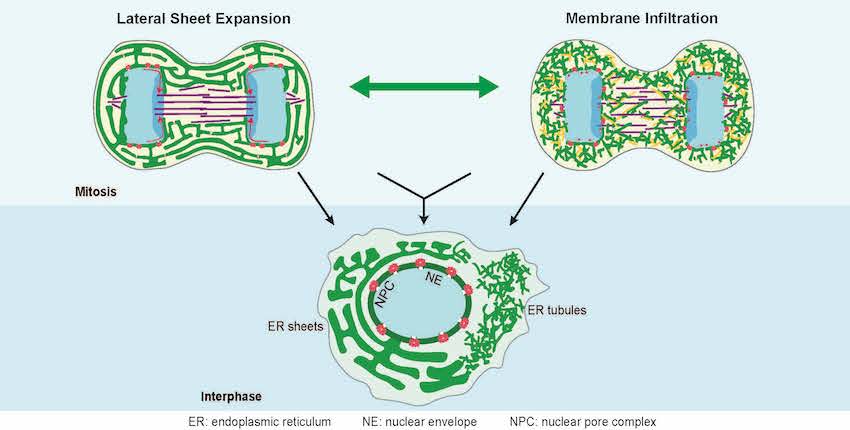
Nuclear envelope (NE) assembly defects cause chromosome fragmentation, cancer, and aging. However, major questions about the mechanism of NE assembly and its relationship to nuclear pathology are unresolved. In particular, how cells efficiently assemble the NE starting from vastly different, cell type-specific endoplasmic reticulum (ER) morphologies is unclear. Here, we identify a NE assembly mechanism, “membrane infiltration,” that defines one end of a continuum with another NE assembly mechanism, “lateral sheet expansion,” in human cells. Membrane infiltration involves the recruitment of ER tubules or small sheets to the chromatin surface by mitotic actin filaments. Lateral sheet expansion involves actin-independent envelopment of peripheral chromatin by large ER sheets that then extend over chromatin within the spindle. We propose a “tubule-sheet continuum” model that explains the efficient NE assembly from any starting ER morphology, the cell type-specific patterns of nuclear pore complex (NPC) assembly, and the obligatory NPC assembly defect of micronuclei.